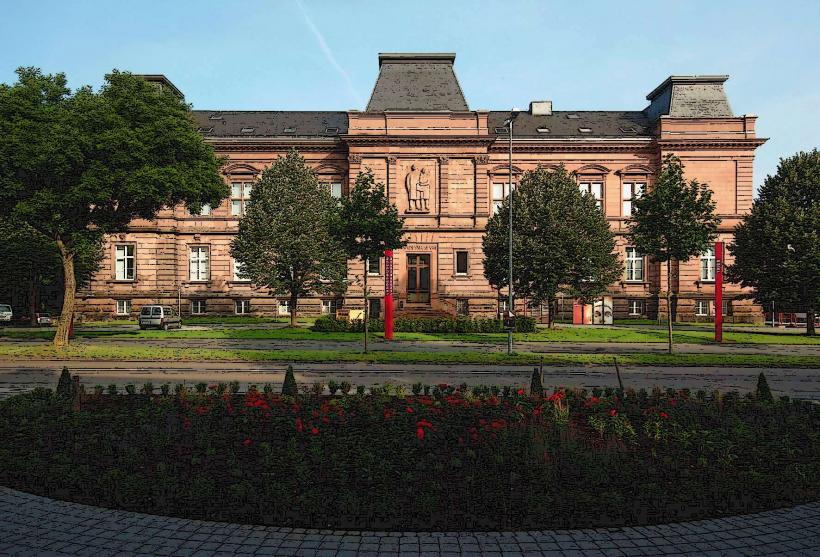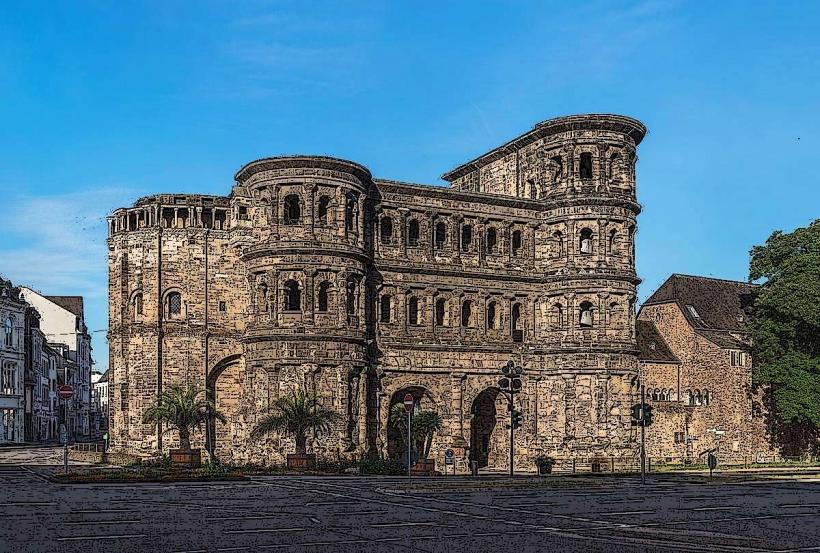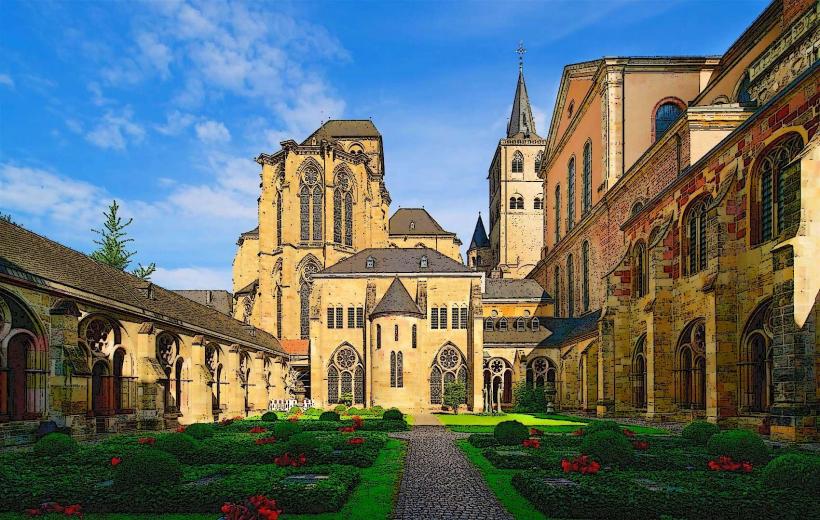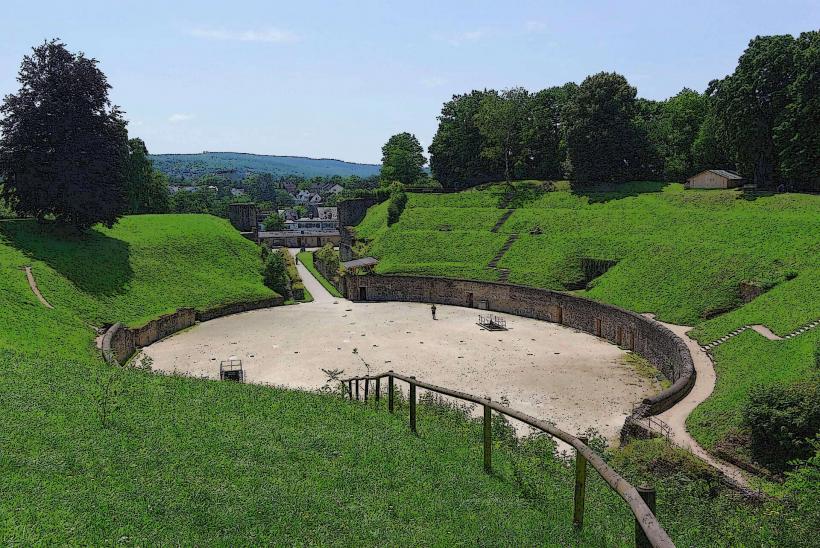Information
Landmark: Basilica of ConstantineCity: Trier
Country: Germany
Continent: Europe
The Basilica of Constantine, also known as the Konstantinbasilika, is a monumental structure in Trier, Germany, and one of the most significant Roman buildings in the city. It was originally constructed during the reign of the Roman Emperor Constantine the Great and stands as a remarkable testament to Roman architecture and the grandeur of Constantine’s imperial presence in Trier.
Key Features of the Basilica of Constantine
Historical Significance
- The Basilica of Constantine was built around 300 AD under the orders of Emperor Constantine the Great. It was designed as a palace hall (or audience hall) for the emperor, serving as a throne room for Constantine when he stayed in Trier. The city was one of the major capitals of the Roman Empire during his reign.
- Constantine chose Trier as one of his favored imperial residences, and the Basilica of Constantine was part of the city's imperial palace complex, intended to reflect the power and splendor of the emperor.
- The building is significant not only for its architectural size and scale but also because of its connection to Constantine, who is known for legalizing Christianity and making it the official religion of the Roman Empire.
Architectural Style and Design
- The Basilica of Constantine is an outstanding example of Roman architecture. It was built in the late Roman Imperial style and features a huge, rectangular plan with no windows in the side walls (a characteristic feature of Roman basilicas).
- The building measures about 67 meters (220 feet) long, 27 meters (89 feet) wide, and has a vaulted ceiling that rises to approximately 30 meters (98 feet). The structure is designed to create a sense of immensity and majesty.
- The basilica has a central nave and two side aisles, and the entire hall was likely covered with marble or similar luxurious materials in its original form.
Interior Design and Function
- The interior of the basilica is striking in its simplicity and grandeur. The central nave, which was originally open and unadorned, allowed for a clear view of the emperor's throne at the far end. The emperor would have sat in a raised position to be seen by his subjects.
- The walls of the basilica were decorated with frescoes and reliefs, but much of this decoration has been lost over time. However, parts of the marble flooring and columns can still be seen in the building today.
- It is believed that the basilica also housed a large statue of Constantine, which would have been placed in the apse at the far end of the hall, directly behind the emperor’s throne. This statue was several meters tall and depicted Constantine in a larger-than-life scale to emphasize his imperial power.
Transformation Over Time
- After the fall of the Roman Empire, the Basilica of Constantine lost its original purpose as an imperial throne room. The building was later converted into a church, and it served as the church of Saint Martin for several centuries.
- Over time, the basilica was used for various functions, including as a church, a storage facility, and even a courtroom during medieval times. However, it retained much of its Roman architectural form despite these changes.
- In the 19th century, the basilica was restored and partially reconstructed, including the restoration of the roof and the creation of a modern entrance that allows visitors to experience the building’s vast interior.
Architectural Features and Preservation
- The Basilica of Constantine is made from large sandstone blocks, and its exterior walls have been remarkably well-preserved. The walls are impressive for their sheer size and the craftsmanship of their construction.
- The vaulted ceiling of the basilica is supported by massive piers, and the overall design of the building emphasizes the verticality and grandeur typical of Roman imperial structures.
- While the basilica’s interior is relatively simple, the spatial scale of the building and its architectural purity make it a powerful symbol of Roman imperial authority.
Visitor Experience
- The Basilica of Constantine is open to the public and is often used as a venue for exhibitions and cultural events. It is one of the most important historical landmarks in Trier, alongside other key Roman sites like the Porta Nigra and the Trier Cathedral.
- Visitors can explore the vast interior of the basilica, which is now largely empty except for a few remnants of its past decoration and architecture. The sense of space and grandeur remains, giving visitors a glimpse into the monumental scale of Roman imperial architecture.
- The exhibition space often includes displays about the history of the basilica, Constantine’s role in Roman history, and the architectural significance of the building.
UNESCO World Heritage Status
- The Basilica of Constantine is part of the Roman Monuments of Trier that are listed as a UNESCO World Heritage Site. It is recognized for its significance as one of the few remaining structures from the time of Constantine and as an example of the Roman imperial architectural style.
Accessibility
- The basilica is located in the center of Trier, close to other major Roman landmarks. It is easily accessible by foot from most locations in the city.
- The building is open year-round, and visitors can freely explore the interior or take part in guided tours that offer further insights into the history and significance of the structure.
Cultural and Religious Role
- Today, the Basilica of Constantine serves as a cultural landmark and a reminder of Trier's importance during the Roman Empire. It has a historical significance for both its architectural merit and its connection to the reign of Constantine the Great, who played a pivotal role in the early history of Christianity.
- As part of the Romanesque architecture of Trier, the basilica’s history is tied to both the pagan and Christian traditions that shaped the city over the centuries.
Conclusion
The Basilica of Constantine in Trier is a stunning example of Roman imperial architecture and a powerful symbol of the empire's former glory. The building’s sheer size, simplicity, and grandeur make it a must-see destination for visitors to Trier, offering a glimpse into the past of one of the Roman Empire’s most significant cities. Its combination of architectural brilliance and historical significance, especially in relation to Constantine, makes it an enduring symbol of the ancient world and its legacy in modern Germany.






